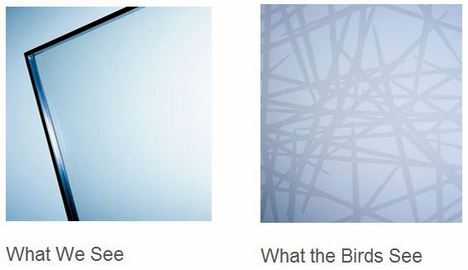 From the Wall Street Journal
From the Wall Street Journal
The Power TripContrary to the Machiavellian cliché, nice people are more likely to rise to power. Then something strange happens: Authority atrophies the very talents that got them there.By JONAH LEHRERWhen CEO Mark Hurd resigned from Hewlett-Packard last week in light of ethics violations, many people expressed surprise. Mr. Hurd, after all, was known as an unusually effective and straight-laced executive.
But the public shouldn't have been so shocked. From prostitution scandals to corruption allegations to the steady drumbeat of charges against corporate executives and world-class athletes, it seems that the headlines are filled with the latest misstep of someone in a position of power. This isn't just anecdotal: Surveys of organizations find that the vast majority of rude and inappropriate behaviors, such as the shouting of profanities, come from the offices of those with the most authority.
Psychologists refer to this as the paradox of power. The very traits that helped leaders accumulate control in the first place all but disappear once they rise to power. Instead of being polite, honest and outgoing, they become impulsive, reckless and rude. In some cases, these new habits can help a leader be more decisive and single-minded, or more likely to make choices that will be profitable regardless of their popularity. One recent study found that overconfident CEOs were more likely to pursue innovation and take their companies in new technological directions. Unchecked, however, these instincts can lead to a big fall.
But first, the good news.
A few years ago, Dacher Keltner, a psychologist at the University of California, Berkeley, began interviewing freshmen at a large dorm on the Berkeley campus. He gave them free pizza and a survey, which asked them to provide their first impressions of every other student in the dorm. Mr. Keltner returned at the end of the school year with the same survey and more free pizza. According to the survey, the students at the top of the social hierarchy—they were the most "powerful" and respected—were also the most considerate and outgoing, and scored highest on measures of agreeableness and extroversion. In other words, the nice guys finished first.
This result isn't unique to Berkeley undergrads. Other studies have found similar results in the military, corporations and politics. "People give authority to people that they genuinely like," says Mr. Keltner.
Of course, these scientific findings contradict the cliché of power, which is that the only way to rise to the top is to engage in self-serving and morally dubious behavior. In "The Prince," a treatise on the art of politics, the 16th century Italian philosopher Niccolo Machiavelli insisted that compassion got in the way of eminence. If a leader has to choose between being feared or being loved, Machiavelli insisted that the leader should always go with fear. Love is overrated.
That may not be the best advice. Another study conducted by Mr. Keltner and Cameron Anderson, a professor at the Haas School of Business, measured "Machiavellian" tendencies, such as the willingness to spread malicious gossip, in a group of sorority sisters. It turned out that the Machiavellian sorority members were quickly identified by the group and isolated. Nobody liked them, and so they never became powerful.
There is something deeply uplifting about this research. It's reassuring to think that the surest way to accumulate power is to do unto others as you would have them do unto you. In recent years, this theme has even been extended to non-human primates, such as chimpanzees. Frans de Waal, a primatologist at Emory University, has observed that the size and strength of male chimps is an extremely poor predictor of which animals will dominate the troop. Instead, the ability to forge social connections and engage in "diplomacy" is often much more important.
Now for the bad news, which concerns what happens when all those nice guys actually get in power. While a little compassion might help us climb the social ladder, once we're at the top we end up morphing into a very different kind of beast.
"It's an incredibly consistent effect," Mr. Keltner says. "When you give people power, they basically start acting like fools. They flirt inappropriately, tease in a hostile fashion, and become totally impulsive." Mr. Keltner compares the feeling of power to brain damage, noting that people with lots of authority tend to behave like neurological patients with a damaged orbito-frontal lobe, a brain area that's crucial for empathy and decision-making. Even the most virtuous people can be undone by the corner office.
Why does power lead people to flirt with interns and solicit bribes and fudge financial documents? According to psychologists, one of the main problems with authority is that it makes us less sympathetic to the concerns and emotions of others. For instance, several studies have found that people in positions of authority are more likely to rely on stereotypes and generalizations when judging other people. They also spend much less time making eye contact, at least when a person without power is talking.
Consider a recent study led by Adam Galinsky, a psychologist at Northwestern University. Mr. Galinsky and colleagues began by asking subjects to either describe an experience in which they had lots of power or a time when they felt utterly powerless. Then the psychologists asked the subjects to draw the letter E on their foreheads. Those primed with feelings of power were much more likely to draw the letter backwards, at least when seen by another person. Mr. Galinsky argues that this effect is triggered by the myopia of power, which makes it much harder to imagine the world from the perspective of someone else. We draw the letter backwards because we don't care about the viewpoint of others.
Of course, power doesn't turn everyone into ruthless, immoral tyrants. Some leaders just end up being tough, which isn't always a bad thing. The key is keeping those qualities in balance.
At its worst, power can turn us into hypocrites. In a 2009 study, Mr. Galinsky asked subjects to think about either an experience of power or powerlessness. The students were then divided into two groups. The first group was told to rate, on a nine-point scale, the moral seriousness of misreporting travel expenses at work. The second group was asked to participate in a game of dice, in which the results of the dice determined the number of lottery tickets each student received. A higher roll led to more tickets.
Participants in the high-power group considered the misreporting of travel expenses to be a significantly worse offense. However, the game of dice produced a completely contradictory result. In this instance, people in the high-power group reported, on average, a statistically improbable result, with an average dice score that was 20% above that expected by random chance. (The powerless group, in contrast, reported only slightly elevated dice results.) This strongly suggests that they were lying about their actual scores, fudging the numbers to get a few extra tickets.
Although people almost always know the right thing to do—cheating is wrong—their sense of power makes it easier to rationalize away the ethical lapse. For instance, when the psychologists asked the subjects (in both low- and high-power conditions) how they would judge an individual who drove too fast when late for an appointment, people in the high-power group consistently said it was worse when others committed those crimes than when they did themselves. In other words, the feeling of eminence led people to conclude that they had a good reason for speeding—they're important people, with important things to do—but that everyone else should follow the posted signs.
The same flawed thought processes triggered by authority also distort our ability to evaluate information and make complex decisions.
In a recent study led by Richard Petty, a psychologist at Ohio State, undergraduates role-played a scenario between a boss and an underling. Then the students were exposed to a fake advertisement for a mobile phone. Some of the ads featured strong arguments for buying the phone, such as its long-lasting battery, while other ads featured weak or nonsensical arguments. Interestingly, students that pretended to be the boss were far less sensitive to the quality of the argument. It's as if it didn't even matter what the ad said—their minds had already been made up.
This suggests that even fleeting feelings of power can dramatically change the way people respond to information. Instead of analyzing the strength of the argument, those with authority focus on whether or not the argument confirms what they already believe. If it doesn't, then the facts are conveniently ignored.
Deborah Gruenfeld, a psychologist at the Stanford Business School, demonstrated a similar principle by analyzing more than 1,000 decisions handed down by the United States Supreme Court between 1953 and 1993. She found that, as justices gained power on the court, or became part of a majority coalition, their written opinions tended to become less complex and nuanced. They considered fewer perspectives and possible outcomes. Of course, the opinions written from the majority position are what actually become the law of the land.
It's not all bad news for those in authority. Mr. Galinsky has found that under certain conditions, power can lead people to make fewer mistakes on tedious tasks, such as matching a color with its correct description. After all, if you're powerless, why bother?
There is no easy cure for the paradox of power. Mr. Keltner argues that the best treatment is transparency, and that the worst abuses of power can be prevented when people know they're being monitored. This suggests that the mere existence of a regulatory watchdog or an active board of directors can help discourage people from doing bad things.
However, people in power tend to reliably overestimate their moral virtue, which leads them to stifle oversight. They lobby against regulators, and fill corporate boards with their friends. The end result is sometimes power at its most dangerous.
That, at least, is the lesson of a classic experiment by the economist Vernon Smith and colleagues. The study involved the dictator game, a simple economic exchange in which one person—the "dictator"—is given $10 and asked to divide the cash with another person. Although the dictators aren't obligated to share—they are in a position of pure power—a significant majority of people act generously, and give away $2 or more to a perfect stranger.
There is one very simple tweak that erases this benevolence. When the "dictators" are socially isolated—this can occur, for instance, if the subjects are located in separate rooms, or if they're assured anonymity—more than 60% of people keep all of the money. Instead of sharing the cash with someone else, they pocket the $10. Perhaps the corner office could use a few more windows.
—Jonah Lehrer is the author of "How We Decide" and "Proust Was a Neuroscientist."
 GORILLA
GORILLA


























